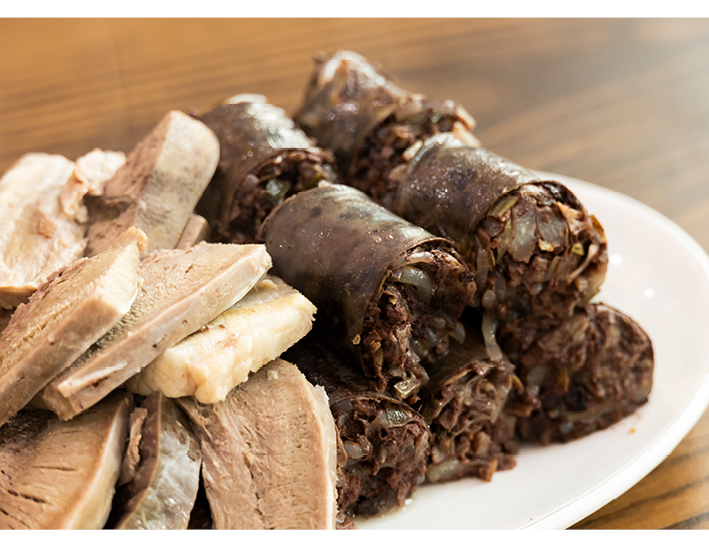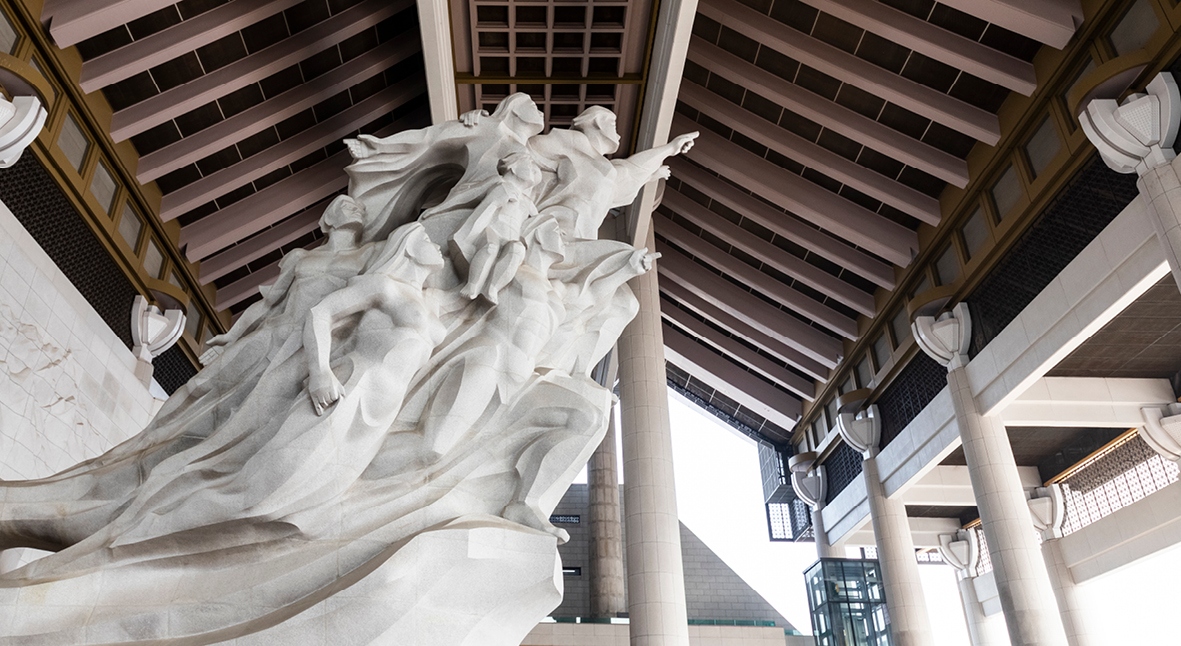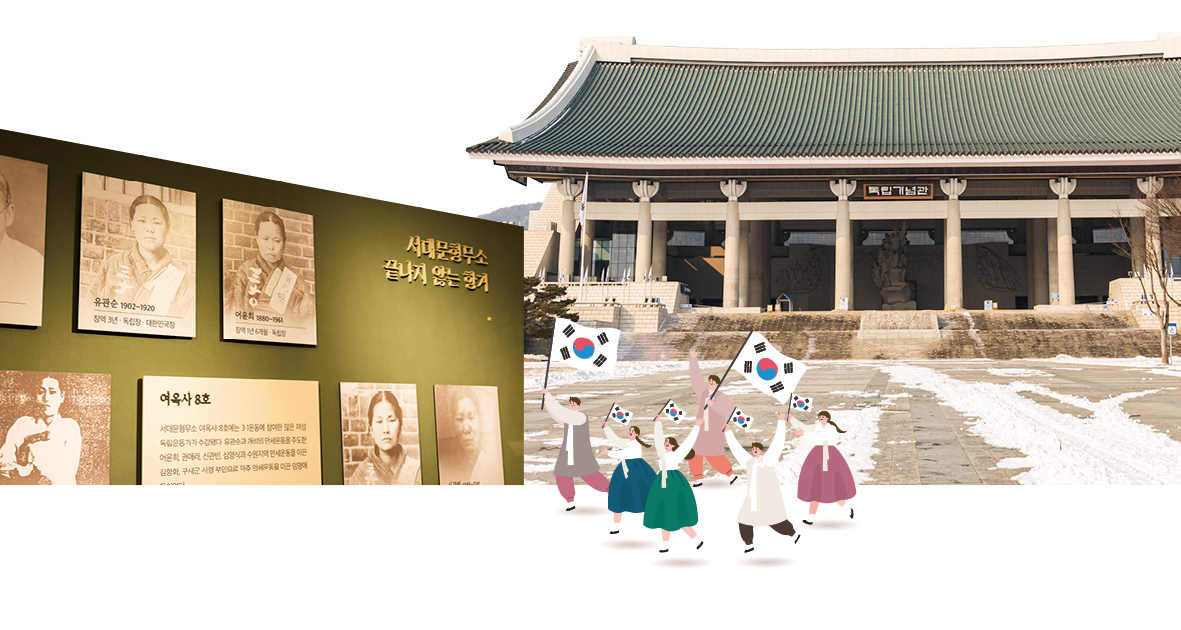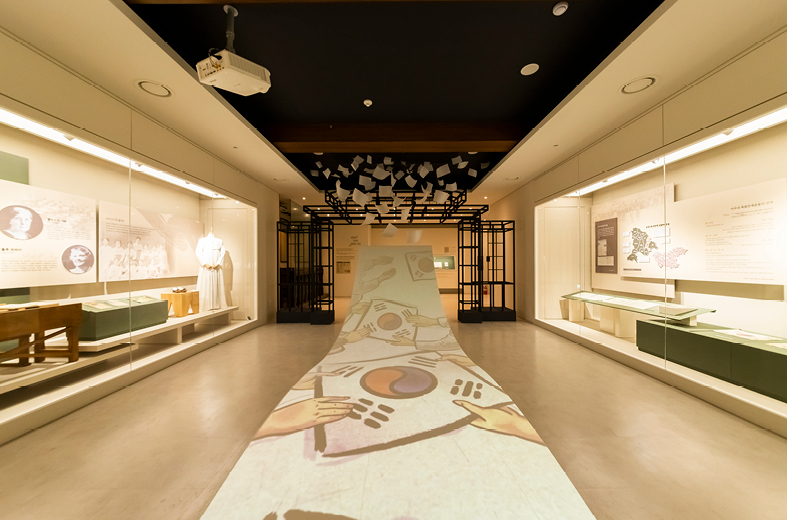한식 읽기 좋은 날
Vol 46. Rediscovery of Pat
Cheonan, the Most Comfortable City Under the Sky
Korean Food Tour
Cheonan means a comfortable place to live under the sky(天 meaning sky, 安 meaning comfort).
As the transportation hub of Korea, it is convenient to travel anywhere to the central and southern parts of the country, and the natural environment is superb. As a tourist destination specialized in history, culture, and experiences, it has a variety of attractions, and it is also well known as the home of specialties, such as hodoo gwaja(walnut cakes) and Byeongcheon sundae(Byeongcheon-style Korean sausage).


When you think of Cheonan, the specialty that comes to mind is the walnut. Walnuts, which are shaped like a brain, contain a large amount of essential fatty acids that activate brain cells. They are also rich in minerals and vitamins B1 and A, and effective for skin beauty, anti-aging, and eye health. It is said that in 1290, Chong-sin Yu, an envoy during the reign of King Chungnyeol of Goryeo Dynasty, returned from the Won Dynasty and brought walnut seedlings and fruits. He planted the seedlings in the grounds of Gwangdeoksa Temple, and the fruits in his hometown. Originally, it was called “hodo(胡桃)” using the words “ho(胡: intruder)” and “do(挑: peach)” as the shape of fruit brought in from the land of foreign intruders. However, “hodoo” is correct according to the current standard.
The “Hodoo Jeonrae Sajeokbi” can be found on the way to Gwangdeoksa Temple, which is known as the place where it was first plated. It is not a coincidence that the head of the memorial looks like a walnut. When I arrived at the temple, there stands a majestic-looking 400-year-old walnut tree that has been designated as Natural Monument No. 398. It is not certain whether this tree was the same walnut that was originally planted; however, it is clear that it is a tree that has lived for a long time. The contrast between the thick trunk and roots with the bare branches demonstrates its longevity. It is also true that it is in good health because it has green and lush leaves every year and bears plump walnuts every year. The area around Gwangdeok-myeon is a walnut-producing area with over 260,000 walnut trees Now, the walnut cake, which is synonymous with “rest stop snack,” can be found in any rest stop. It is also a representative food of Cheonan, born from the abundance of walnuts. Cheonan is the only place that comes to mind where there are walnut cake shops all over the city other than at a rest stop. During my short trip when I went around Cheonan, I saw walnut cake shops as many as cafés. The origins can be traced back to 1934, when Cho Gwigeum, who learned the Western-style baking techniques, developed it and sold it at Hakhwa Confectionery in Cheonan. It has been in operation for 87 years for the fourth generation, and it is the only place that boils red beans to make red bean paste and uses white bean paste. As the years went by, machines started baking the cake. However, oiling and adding the walnuts to the dough is still done by people. We cannot discount Cheonan's geographical characteristics for walnut cakes to become widely known as a rest stop snack. Cheonan Station, where many domestic trains pass and stay, was very congested and the waiting time was extremely long. For this reason, people started selling woodong(thick noodles), followed by walnut cakes, as these could be consumed slowly at the station while waiting. It was sold to the passengers on the train, and it became famous all over the country.
It was a new experience to discover walnut cakes, which I always encountered at rest stops, in a dedicated shop. After passing by several walnut cake shops, I went into one and purchased a box. Each cake was carefully wrapped. When I took a bite, I bit into a large walnut. If all walnut cakes I ate up to that time were filled with red beans, the walnut cakes in Cheonan were surprisingly filled with chunks of walnuts, thus making them nuttier.


Byeongcheon Sundae is an essential food symbolizing Cheonan. When you enter “Byeongcheon Sundae Street(33 Aunaesundae-gil, Byeongcheon-myeon, Dongnam-gu, Cheongan-si),” where dozens of Byeongcheon Sundaeguk(Byeongcheon-style Korean sausage and rice soup) restaurants are lined up, you are immediately hit with the savory scent coming from the restaurants, thus making warm and soft sundae-guk perfect for these days with a fickle weather. Byeongcheon Sundae is famous for its soft and deep soup flavor without any odor. About 60 years ago, when a ham factory opened near Byeongcheon Village, sundae made with plenty of seonji(cattle or swine blood) and vegetables was born. The sundae was originally sold at one or two restaurants on Byeongcheon market days, but its popularity and fame have increased to the point that it is sold all over the place. Byeongcheon Sundae is characterized by a soft and rich taste with a large amount of seonji. Byeongcheon Sundaeguk is seasoned with salted shrimp and dadaegi(seasoned red chili sauce), and the spicy and savory soup makes you think of the reason for its popularity. While you savor the deep flavor of the sundae, the soup leaves a lingering aftertaste by mingling with the hot pork broth with a deep and rich flavor. Sundae is also considered as a nutritious food for today’s people. Seonji is rich in vitamin A, which is good for eye health, and it contains a high amount of iron and protein, so it is very good for headaches and anemia. A bowl of sundaeguk is similar to taking herbal medicine in that makes you feel full and comfortable. It is a dish you will crave even more in the chilly weather that makes your collars tight.



Cheonan is the hometown of Martyr Yu Gwan-sun. Furthermore, the Aunae Market demonstration led by Yu in 1919, which we were taught in school, took place in the Cheonan area.
Yi Dong-nyeong, a patriotic martyr from Mokcheon-myeon, Cheonan-si dedicated himself to the independence movement. As a member of the Independence Club organized by Seo Jae-pil and Yun Chi-ho, he launched the modern civil rights movement and national protection movement, joined the New People’s Association, which is a secret organization, and put all his energy into fostering the independence army. As the first chief of Shinheung School, which was the parent of Shinheung Military Academy, he later brought up the driving force behind the armed struggles against Japan, such as the Battle of Qingshanli. The birthplace and memorial hall of Yi Dong-nyeong are located in the middle of a rice field on a country road. With his birthplace behind him, the statue of Yi Dong-nyeong sits alone in the middle of a snowy field.
The birthplace of Martyr Yu Gwan-sun can be found nearby. She, too, was from Cheonan, and as the second daughter of a family of 3 sons and 2 daughters, she was a smart student who grew up being loved. While studying at Ewha Hakdang in Seoul, she participated in the March 1st Movement that took place in Pagoda Park, and when the school was closed afterward, she returned home to Cheonan. At home, she thought about starting the anti-Japanese movement and tried to organize her family members, friends, and relatives. On April 1, 1919, she led the independence movement participated by thousands of people in Aunae Market, which is today’s Byeongcheon. On this day, her parents were killed for their country and she was arrested as the leader. She was sentenced to 3 years in prison, but she died the following year on September 28, 1920 at the age of 18 years after being severely tortured.

I visited the Yu Gwan-sun Memorial Hall located near her birthplace, where I could see various videos, photos, documents, as well as the courtroom where she was put on trial and the prison cell of Seodaemun Prison that were reproduced. Furthermore, the song that she made and sang together with her cell mates was playing. It is a good place to remember and commemorate the brief but intense life of Martyr Yu Gwan-sun with works, including a photo that restored her normal face from a recode of her photo taken after she was tortured. I climbed the long steps, burned incense on the empty, cold podium of her memorial hall, and descended the steps.
After learning about the lives of the martyrs in the Cheonan area, I understood why the Independence Hall was located in Cheonan. After looking around at the Monument to the Nation that expresses the national spirit of immortality with overwhelming size, the Taegeukgi Plaza where 815 Taegeukgi flags fly in the wind, and 6 exhibition halls collected with nation’s roots, ordeals, cries, and efforts to take back the country and erect a new one, I believe I should be more diligent in my position for the value of my homeland, freedom, and the effort that these people made for them. My trip to Cheonan was full of unexpected discoveries, fun, and emotions as I reflected while eating a bowl of hot sundaeguk at a Byeongcheon Sundaeguk restaurant, which was one of the many walnut cake shops.

 한국어
한국어
 English
English






